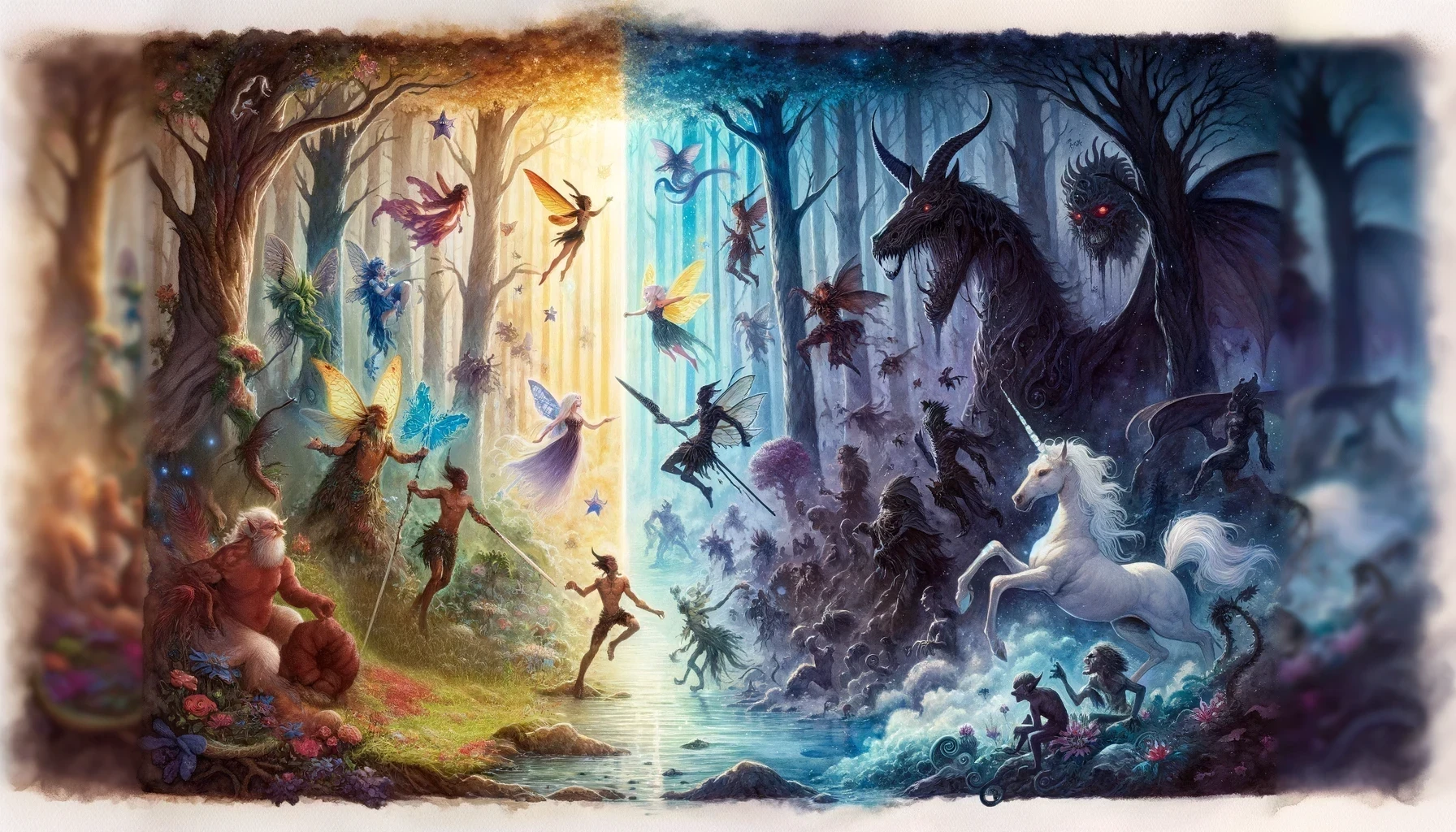top of page

The Clockwork Conspiracy
A busy steampunk cityscape scene



The Clockwork Conspiracy
A busy steampunk cityscape scene
1/4
D&D Concentration Check
Concentration Check 5E
The concentration check 5e is a game mechanic in Dungeons & Dragons 5th Edition, related to casting and maintaining certain spells. Some spells require a caster to maintain concentration to keep the spell's effects active.
Concentration: This refers to a caster's ability to maintain focus on a spell that has ongoing effects. If a spell requires concentration, the caster cannot cast another concentration spell without ending the first one.
-
Spell: A magical effect created by a caster. Some spells, especially those with durations longer than instantaneous, require concentration to maintain.
-
Casting Time: The time it takes to cast a spell. Some spells require an action, a bonus action, or even longer periods of time to cast.
-
Duration: The length of time a spell's effects last. Spells requiring concentration have durations that last as long as the caster maintains concentration, up to a specified maximum time.
-
Concentration Check: A Constitution saving throw that a caster makes when they take damage while concentrating on a spell. If the caster fails the check, their concentration is broken, and the spell ends.
-
Saving Throw: A roll made to resist or avoid certain effects, including maintaining concentration on a spell when taking damage.
Related Topics
-
Spellcasting: The act of casting spells, which are magical effects used by certain classes in D&D. Concentration is a key mechanic in spellcasting.
-
Magic: A central feature of D&D, used by many classes. Magic often takes the form of spells, some of which require concentration.
-
Spellcaster: A character who can cast spells. Spellcasters include wizards, clerics, druids, bards, sorcerers, warlocks, and certain types of fighters and rogues.
Relevant Rules and Mechanics
-
Maintaining Concentration: A spellcaster can maintain concentration on only one spell at a time. If a spellcaster casts another concentration spell, the first spell ends.
-
Breaking Concentration: Taking damage can potentially break a caster's concentration. When a spellcaster takes damage while concentrating on a spell, they must make a Constitution saving throw to maintain concentration. The DC is 10 or half the damage taken, whichever number is higher.
-
Concentration and Movement: Moving doesn't break concentration, unless the movement involves something that would make concentrating difficult, as determined by the Dungeon Master.
-
Duration of Concentration Spells: A concentration spell lasts as long as the caster maintains concentration, up to the maximum duration specified in the spell's description.
Understanding the concept of concentration is key to effective spellcasting. It adds strategic depth to the game, as players must decide which spells to concentrate on and when to cast them.
Harnessing the Power of Concentration: A Guide for Dungeon Masters
Dungeons & Dragons' concentration mechanic provides strategic depth to magical encounters and requires players to make thoughtful choices about their spell usage.
As a Dungeon Master (DM), understanding and effectively applying this mechanic is crucial to crafting a balanced and engaging game.
Firstly, concentration maintains a balance within the game by limiting the number of active spells a character can maintain simultaneously.
It prevents spellcasters from overloading the battlefield with multiple persistent spell effects, ensuring fair gameplay for all participants.
Concentration spells often have powerful or controlling effects, such as 'Hold Person', 'Invisibility', or 'Fly'. Recognizing these spells and their potential impact on combat scenarios helps DMs plan encounters more effectively.
This knowledge assists in designing encounters that challenge, but don't overpower, your player party.
The mechanic of concentration checks adds an additional layer of tension to combat. When a spellcaster takes damage, they must make a Constitution saving throw to maintain their concentration.
This mechanic ties spellcasting into the risk and reward system of combat. Use it to emphasize the dangers of casting in close combat, or to encourage players to protect their spellcasters.
Moreover, as a DM, you can create more dynamic and interesting scenarios using the environment or NPCs. For example, a gusty, wind-swept peak might require concentration checks to maintain certain spells, or an intelligent enemy might specifically target spellcasters in an attempt to break their concentration.
Lastly, ensure that your players understand the concentration rules. Encourage them to strategize and make meaningful choices about when to use their concentration spells.
In conclusion, the concentration mechanic is a powerful tool in your DM arsenal. It can be used to create tense, strategic encounters, promote teamwork within the party, and build a more immersive and challenging game world.
Additional Points on Concentration
-
NPCs and Concentration: NPCs, particularly those with spellcasting abilities, can dramatically influence encounters using concentration spells. A villainous sorcerer might use 'Hold Person' to paralyze a party's fighter, while a cunning druid might employ 'Entangle' to disrupt the party's mobility. As a DM, consider how NPCs might strategically use concentration spells, adding an extra layer of complexity to combat. Encourage your players to strategize—maybe they'll decide to focus attacks on the NPC spellcaster to break their concentration, or perhaps use their own concentration spells to counteract those of the enemy. By weaving concentration mechanics into NPC spellcasting strategies, you create more dynamic and challenging encounters, pushing your players to plan and coordinate their actions.
-
Spell Combinations and Concentration: Concentration spells don't exist in isolation; they can be combined with non-concentration spells to great effect. A caster maintaining 'Invisibility' might couple it with 'Silent Image' to create a convincing decoy while they sneak away. A druid holding concentration on 'Call Lightning' might also cast 'Thorn Whip' to pull enemies into the storm. Remember, concentration only restricts maintaining multiple concentration spells; other spells are fair game. By encouraging players to think creatively about spell combinations, you foster diverse and engaging combat scenarios that highlight the depth of D&D's magic system.
-
Homebrew Rules: While D&D's core rules provide a solid framework, homebrew rules allow DMs to customize gameplay to suit their table. For example, you might introduce additional concentration checks for intense movement, like navigating rough terrain or climbing while maintaining a spell. Conversely, you might rule that certain spells, like 'Mage Armor,' don't require concentration due to their passive nature, allowing casters more magical flexibility. Homebrew rules can add complexity, cater to specific playstyles, and open new avenues for roleplaying and strategic gameplay. Always ensure, however, that your changes preserve the balance of the game and that all players are onboard.
-
Magic Items and Concentration: Magic items provide unique ways to interact with the concentration mechanic. For instance, a 'Ring of Concentration' might allow a caster to maintain two concentration spells at once, while a 'Circlet of Iron Will' could provide advantage on concentration saving throws. When introducing such items, consider their potential impact on game balance. They should offer new opportunities and challenges, not simply make the game easier. For example, maintaining two spells might require extra concentration checks, and items could draw unwanted attention from envious NPCs. Properly used, magic items can enrich gameplay and add layers of strategy to spellcasting.
-
Advantages and Disadvantages of Concentration Spells: Concentration spells often have powerful or lasting effects, from 'Fly's' mobility to 'Banishment's' removal of enemies. However, they come with the risk of being broken and require the caster to forego other concentration spells. Non-concentration spells, on the other hand, might offer instant effects or short-term benefits without such limitations. By understanding the trade-offs, players can make more informed decisions during character creation, leveling up, and combat. As a DM, understanding these dynamics helps you create balanced encounters. You might craft scenarios that specifically challenge concentration, or use enemies and environments that resist certain spells, keeping your players on their toes and ensuring every spell choice matters.
Concentration Case Study
Dungeon Master (DM) Liam had been running a Dungeons & Dragons campaign for a few months.
The group, composed of a motley crew of spellcasters, was preparing to face their most challenging encounter yet: a dark wizard notorious for casting spells that require concentration to control the battlefield. This upcoming session would be a real test of their understanding of concentration mechanics.
For the party's wizard, Eli, maintaining concentration on a spell while casting others had become second nature. The ranger, Maya, was new to spellcasting and often stumbled with concentration checks. The third, a warlock named Flynn, had spells with powerful effects but had previously struggled with concentration saves. Liam, as the DM, knew he had to challenge each character while still providing a fair chance at success.
Liam started planning the encounter by focusing on the dark wizard's abilities. The NPC would use powerful concentration spells like 'Hold Monster' to disable party members, and 'Blight' to deal heavy damage. This would force players to make concentration checks to maintain their own spells, and Constitution saving throws to resist the wizard's damaging spells. Liam also decided to introduce environmental phenomena, such as gusty winds and rumbling ground, to heighten the challenge.
He made sure to remind his players that if a spellcaster took damage, they needed to make a Constitution saving throw to maintain concentration. The DC was 10 or half the damage taken, whichever number was higher, a fact Liam had often reiterated.
In the session, Flynn was the first to engage the dark wizard. His choice of 'Hex' was a strategic move, but maintaining concentration while the wizard and the environment threatened him was a significant challenge.
Flynn had to quickly learn the importance of his Constitution modifier, a statistic that he had previously undervalued, as it played a crucial role in his concentration saves.
Maya, seeing Flynn struggle to maintain concentration on his spell, made a calculated decision. She took aim with her longbow, trying to break the wizard's concentration and thus his 'Hold Monster' spell, which was paralyzing Eli.
She understood that only one concentration spell could be maintained at a time and knew that damaging the wizard would force him to make a saving throw to maintain concentration. Her arrow struck true, and the wizard failed his concentration check, freeing Eli.
Eli, now free, found an opening to cast 'Slow,' a concentration spell that would reduce the wizard's casting time, giving the party some respite. But Eli was aware of the risks involved, the spell's effect wouldn't last if he failed to make his concentration saves, and he was already low on spell slots.
Despite the hardship, the players began to appreciate the nuances of maintaining concentration, the implications of their Constitution saving throws, and how to effectively use their spell slots. Eli was able to maintain the 'Slow' spell long enough for Flynn and Maya to wear down the wizard.
bottom of page




